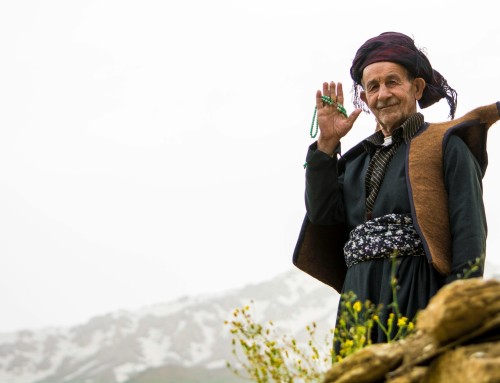There are thousands of years of history poking out at you from every corner of the Middle East. The world’s three largest religions all began in this part of the world, and have been in contention over it for most of modern memory.
But the big three are not the only religious groups trying to find space in an unhospitable environment. There are countless minority religions scattered throughout all the corners of the Fertile Crescent. Some of them were holdovers from ancient religious practices, like Zoroastrianism, where others seem to be a conglomeration of animism, folk religion, superstition, and main line religions like Christianity, Judaism, Islam, or Hinduism.
Secret Rites
However, there is a special sect of these tiny religious groups that most anthropologists refer to as “Mystery Religions”. The prime characteristic that these belief systems have in common is the secret rites and teachings which they follow are only known by those initiated into the religion. Any scriptures or oral traditions are not usually shared with outsiders, or only shared piecemeal.
Non-believers are rarely allowed to observe religious sacraments or celebrate any holy days. Usually, the cause of this reticence is historical persecution for their difference in belief. But it can also be built into the structure of the religion itself with people only gaining knowledge as they “level up” as followers. Or sometimes it is only if they are born into a certain class within their culture. In fact, most of these mystery religions believe that you have to be born into them to be able to be a believer. You cannot convert or marry into the sacred circle. And anyone who marries outside the community is often cut off from contact with those within.
The Power of Tradition
Most mystery religions usually follow the cycle of birth and death through the seasons (Spring being birth, fall/winter being death) and have ceremonies marking those occasions. They tend to be based on oral tradition rather than written scriptures.
Most things are passed from generation to generation without any real explanation as to why that belief is held or why this ritual must be followed. It’s just another aspect of their mystery; their beliefs are inexplicable even to their own followers.
Many of these religions forbid anyone to write down any of the stories, songs, or traditions. Most systems of belief argue that it is not about what you “know” so much as what your “experience” tells you to be right or true. Or that you should just follow without questions those to whom more has been revealed. There is not a lot of space for disagreement or argument. This is, in part, because there generally isn’t a solid foundation to disagree or argue from.
Can We Even Get Answers?
All of these things combined make it extraordinarily difficult for anyone to research or catalog specifics of these belief systems. Most works on specific groups tend to be brief, filled with speculation or conjecture, and often contradictory to other published works. It can be frustrating to read through papers, books, and articles only to come out the other side feeling like you have no deeper understanding of what it is you just studied.
Getting a general consensus feels impossible. But that is what I have tried to do for you, dear reader. Through much toil, some tears, and even a little blood (paper cuts are trees’ revenge). Over the next few weeks we’re going to try to unravel some of the mystery. We are primarily going to focus on those groups living in Iraq, but will inevitably end up referring to some outside of that region as well. It’s murky, twisty territory. We hope you are ready for the adventure.




